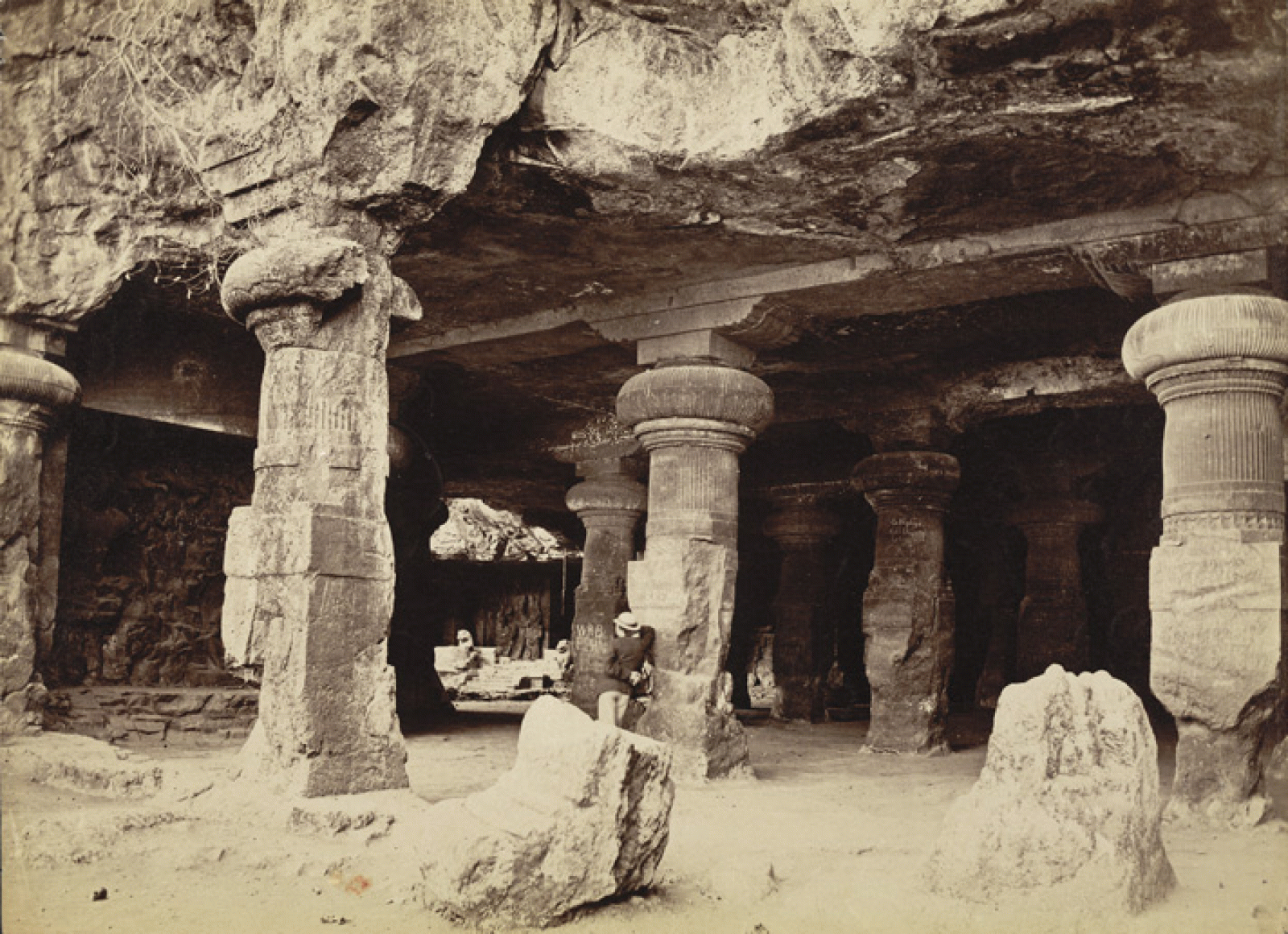Research
Learning to See, Learning to Draw: Vision, Modernity and the Teaching of Drawing in 19th Century Bombay
Deepti Mulgund

Photograph of Interior Views of the Elephanta Caves (with a visitor in the foreground). Location: Off the coast of Bombay (Mumbai), circa 1875, Bellew Collection of Architectural Views. Image credit: Asia, Pacific, and Africa Collections, British Library
The project is part of a larger enquiry into the formation of the modern art-viewing subject in a colonial regime. If one begins with the premise that learning to see correctly is critical to an engagement or 'understanding' of art, then the processes by which such knowledge is imparted, become critical to study the development of art publics. From this baseline, the project examines the teaching of drawing within the formal education system in 19th and early 20th century colonial Bombay (now Mumbai) India. The teaching of drawing throws up discourses central to the training of vision and the ability to see and render what one sees, 'correctly.' Hand-eye fidelity, the salutary effects of copying models and exemplars, and the disciplining of bodies were some of the discourses centred on vision that were critical to the formation of a new colonial subject. The project takes into account the shifts in the relationship between vision, knowledge and the body within colonial modernity and reads Bombay's school-goers through this matrix. It will bring together archival and other primary material with secondary literature to delineate the teaching of drawing to school-goers in colonial Bombay. Thus the project will examine a configuration which stretches in the following directions: investigating accounts of the teaching and learning of drawing, the material conditions produced by/for the teaching of drawing and the contradictory approaches to copying as a means of pedagogic transmission.


